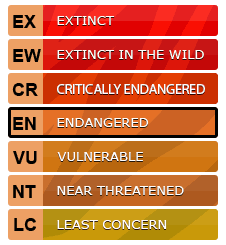What is Tiger Conservation?
Tiger conservation is an attempt to help prevent the tiger (Panther tigris) from becoming extinct and to protect and preserve the tiger’s natural habitat, including habitat suitability, reintroduction of the tiger’s prey, the elimination of poaching, tiger smuggling, and illegal trade.
Tigers are the largest living big cat on our planet, renowned for their power, strength, and wild beauty. They are an icon of wildness.
100 years ago, an estimated 100,000 tigers lived in the wild. Today they continue to vanish from our planet, numbering less than 3,900. How can we imagine a world in which majestic, powerful tigers no longer exist in the wild?

But there is hope for tigers through tiger conservation efforts. In the last few years thanks to dedicated efforts by conservationists and governments, they have slowly increased their numbers in India, Nepal, Bhutan, China, and Russia. However, in other parts of Asia including Myanmar, Sumatra Indonesia and Malaysia, tiger numbers are in steep decline due to ongoing poaching and habitat loss.
The time to act was yesterday. Endangered tigers need our help! Please donate to tiger conservation today!
The recovery of tiger populations across many countries in recent years shows that it’s not too late to save endangered tigers. It will take willpower, passion, and long-term commitments from governments to villagers, rangers, and law enforcement, to everyday people like you and me.
It requires that our grandchildren learn to love tigers and are moved to support their protection in the wild. The next generation are the future stewards of our planet’s wildlife and wild places, including tigers and their forest homes.
Project Endangered Tigers is fighting back on behalf of tigers, raising both awareness and funds for tiger conservation.
Which tigers still roam our planet today?
There were once 9 subspecies of tigers. Each tiger evolved and adapted to live in different climates and geographies with distinctive features from size to stripe pattern and mitochondrial DNA profiles. Today, tigers still roam from the frigid winter forests of Siberia in the north, to the hot and steamy tropical rainforests of Indonesia in the south.
Their sizes range from the biggest wild cat on our planet, the endangered Amur tiger males that weigh up to 660 pounds, to the smallest critically endangered Sumatran tiger, which is similar in size to a leopard or jaguar, weighing in at a third of the size of their northern relatives.
Since 2017, tigers have been divided into two tiger subspecies called taxonomic divisions: the continental tigers of mainland Asia (scientific name P. t. tigris), and the Sunda island tigers of Indonesia (P. t. sondaica). All are extinct or severely threatened with extinction. It’s a sad roll call for an iconic animal that is a symbol of our wild world. Even with the ongoing tiger conservation programs today, some subspecies may not recover.
The Continental Tigers
The Sunda Island Tigers:
Of the nine-original subspecies of tigers, three have been driven to extinction in the last 70 years. The Javan tiger was the last to disappear forever in the 1980s. The Indochinese tiger clings to existence only in Thailand, considered locally extinct in China (last seen 2007), Cambodia (declared extinct in 2016) and Laos (snared to death with all gone by 2014).
Today, the South China tiger can no longer be found in the wild and is presumed to be extinct. The Malayan tigers are in crisis, their numbers plummeting in half despite an international tiger conservation campaign to double tiger numbers.
The final patches of forest refuge for the Sumatran tiger continue to be cleared for palm oil plantations, pushing them higher into the mountains where limited numbers of tigers can survive. Time is running out for tigers.
This disappearance of tigers from our planet happened in our lifetimes. On our watch. It’s a devastating fact, and one of the main reasons Project Endangered Tigers was created.
Why are tigers disappearing?
We have destroyed the tiger’s forest homes and replaced them with fields and plantations. We have eaten their prey, hunted, and trapped them, and continue to kill them to consume their body parts as medicine, and to show off status and wealth. The most devastating of the many threats facing tigers today are poaching for the illegal wildlife trade and habitat loss.
Tiger Poaching & the Illegal Wildlife Trade
Tigers are part of the massive illegal trade in wildlife, the same trade that’s wiping out elephants, rhinos, and many other species. It is a shocking 20 billion dollar a year transnational crime. Tiger body parts are harvested both from tigers in captivity and poached from the wild to be shipped all over Asia to dinner tables, turned into Tiger Bone Wine or used as an ingredient in Traditional Chinese Medicine and other modern remedies.
The high price these tiger parts and products command mean they are also often given as gifts to show off a person’s wealth and status.
Habitat Loss: Vanishing tiger landscapes
To save a species from extinction requires saving suitable wild habitat. Tigers, as solitary hunters, need very large wild territories to roam. Since 1998, tigers have lost 40% of their habitat and today occupy only about seven percent of their former range.
Mass deforestation has occurred across centuries despite tiger conservation efforts as human populations grew, converting forests to fields for agriculture, livestock grazing, palm oil plantations, forestry, and mining. This deforestation continues today as our unsustainable thirst for natural resources continues to place pressure on tiger landscapes. As the forest is carved up for farming and development, the tiger’s habitat becomes fragmented.
This fragmentation cuts off gene exchange and isolates tigers into unsustainably small and isolated populations. We need to conserve the tiger and its prey and habitat today!
Depletion of prey populations
Tigers need to eat! Without a thriving prey base, they cannot recover. A large reason for the disappearance of tiger’s prey is a simple piece of wire used to catch animals for bushmeat – the snare.
Snares are set as traps to close in on an animal’s neck or leg, suffocating the animal to death or leaving it trapped to eventually die of hunger. The widespread use of snares has led to “empty forest syndrome” in South East Asia, with some heavily snared areas now emptied of all large mammals.
The wild meat is in demand for both personal consumption by people living in rural areas, and also sold to wealthy elites in the city who have a growing taste for wild meat as a delicacy. These snares also catch, maim, and kill tigers in their indiscriminate loops of death.
Lack of Genetic diversity
Genetic diversity is a bottleneck for the recovery of several tiger subspecies and populations. Amur tigers have recovered today from a low of only 20-30 individuals. The remaining captive 178 South China tigers are descended from only 6 tigers. Additionally, tiger populations clinging to survival in small, fragmented patches of habitat are not sustainable in the long-term due to inbreeding.
Climate change
The climate change is also an over-arching threat to suitable tiger habitat. Sea-level rise threatens to submerge tiger habitat for the Bengal tiger of the Sundarbans, pushing the tigers further inland towards human settlements and conflict.
As the climate changes, the forest and prey it supports changes too, meaning tigers will be pushed from some of their current protected areas and into conflict with humans. This underscores the need for connectivity, to allow tigers to move to suitable habitat.
 Tiger Conservation Action
Tiger Conservation Action
The tiger conservation challenge today is to ensure the remaining tiger subspecies can be saved. We must take action now if we don’t want another tiger species to go extinct on our watch. We must stop the demand for tiger products, which drives their poaching in the wild and take a stand against cruel tiger farms in China.
With their need for large territories, saving tiger habitat is essential for overall tiger conservation efforts. Their wild homes must be conserved and expanded, with connectivity restored using forest corridors to allow tigers to move between areas and ensure healthy gene-flow. Protecting and restoring tiger forests and corridors is not only good for tigers – it also helps to mitigate climate change.
If tigers have enough prey for food, safe territory, and a good patrol team of rangers, coupled with strict wildlife laws and enforcement, tigers can recover but it will take a global tiger conservation effort. For the first time in decades, tiger populations in several countries are on the rise again thanks to international commitments to work towards the “Tx2” goal set in 2010 to double wild tiger numbers by the year 2022.
In India, tiger population recovery was achieved by productive tiger conservation campaigns, better forest management and reducing conflict by moving villages away from tiger habitats. Today there are 50 tiger reserves in India, up from only 8 when the Bengal tiger was officially protected in 1973.
Nepal is also on track to double its Bengal tiger numbers by 2022 but is reaching the carrying capacity of its current tiger reserves. Tigers in Nepal will need more protected and connected space to continue to increase in numbers.
With the discovery of new wild tiger populations in eastern Thailand in 2017 and in the western region in 2019, Thailand is cautiously hopeful of achieving its Tx2 goal. Thailand’s tiger recovery could also help Myanmar – the western forest complex of Thailand is a bridge linking the two countries together.
The Terai Tiger Landscape is connecting and expanding Bengal tiger territory via two forest corridors that connect Nepal and India.
New hope is on the horizon for tigers and tiger conservation thanks to plans for tiger rewilding. Plans are underway to return tigers to Central Asia by translocating a population of wild Amur tigers from Russia to Kazakhstan. The first tigers are on track to arrive in 2024.
This new tiger conservation effort could support up to nearly 100 Amur tigers within 50 years. The growing and successful wild Bengal tiger population can also be used as a source population to restore tigers to former ranges and countries now ready for their return including Cambodia.
Partnering with communities who live in, near and close to tiger reserves is critical to the success of all tiger conservation efforts. Tiger conservation can only be sustainable if local people are supportive of having tigers living in and across their lands. Protecting tigers creates jobs linked to tourism and helps create alternative livelihoods by making local people custodians of wildlife.
To help with the lack of genetic diversity, scientists are planning to tap the genetic reservoir of captive tigers at Zoos around the world. The Amur tiger has the largest captive management program of all the tiger subspecies, with at least 420 individuals managed in captivity. These tigers can help to genetically supplement the wild tigers and help recover their populations.
Save Tigers Live HD Wallpaper Mobile App and Screensaver
Screensaver and app sales benefit tiger conservation
WildCats Conservation Alliance is a wild tiger and Amur leopard initiative that funds carefully chosen conservation projects across Asia, working with a range of national and international conservation NGOs. It is a partnership between the Zoological Society of London (UK charity # 208728) and Dreamworld Wildlife Foundation (ACNC # 61150274463)’.
Screensaver Requirements
App Requirements





Once payment is made, you can download the screensaver and app immediately. The Android app can be downloaded directly from our website and includes a code to unlock the app. We have chosen not to include our app in the Google Play Store because of the very high fees Google charges.
Tiger Conservation - Project Endangered Tigers
Amur Tiger | Bengal Tiger | Malayan Tiger | Indo-Chinese Tiger | South China Tiger | Sumatran Tiger | Bali Tiger | Caspian Tiger | Javan Tiger
*Proceeds from the Save Tigers HD Android Live Wallpaper App and Windows Screensaver Benefit Tiger Conservation.



 Tiger Conservation Action
Tiger Conservation Action